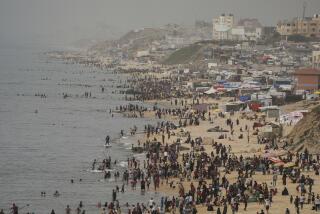Fishing limits proposed to save sea lions in Alaska
Federal authorities have proposed shutting down fishing for cod and mackerel across more than 131,000 square miles in the western Aleutian Islands of Alaska in an effort to halt continuing declines in Steller sea lions.
The measure is part of a package of restrictions proposed Monday for a total of more than 350,000 square miles of the West Coast’s most productive fishing grounds that could affect fisheries worth $30 million a year.
A biological opinion released by the National Marine Fisheries Service suggests that clamping down on harvests of fish that are important parts of the sea lions’ diet may be the only way to halt the decline of the animals, whose numbers have shrunk by 83% since the 1970s. Though they are holding steady in some places in Alaska, worrying declines have persisted in the western Aleutians.
The number of adult sea lions in that region decreased 45% from 2000 to 2008, and pup production shrank at a similar rate, prompting federal scientists to try to move quickly.
Fishing organizations have called for more time to study and comment on the proposal, which would take effect at the beginning of 2011. They argue that predation from killer whales, climate shifts and other factors are impairing the marine mammals’ recovery in the North Pacific, and they point out that sea lion numbers across Alaska are fairly stable.
But Doug Mecum, regional supervisor for the National Marine Fisheries Service, said the sea lions could not head toward recovery until the steep declines in the western Aleutians had been halted.
“The numbers overall are kind of stable and they’ve even rebounded some. But ‘stability’ is not what the courts have found is adequate under the Endangered Species Act. They need to be recovering,” Mecum said in an interview.
kim.murphy@latimes.com
More to Read
Start your day right
Sign up for Essential California for news, features and recommendations from the L.A. Times and beyond in your inbox six days a week.
You may occasionally receive promotional content from the Los Angeles Times.






